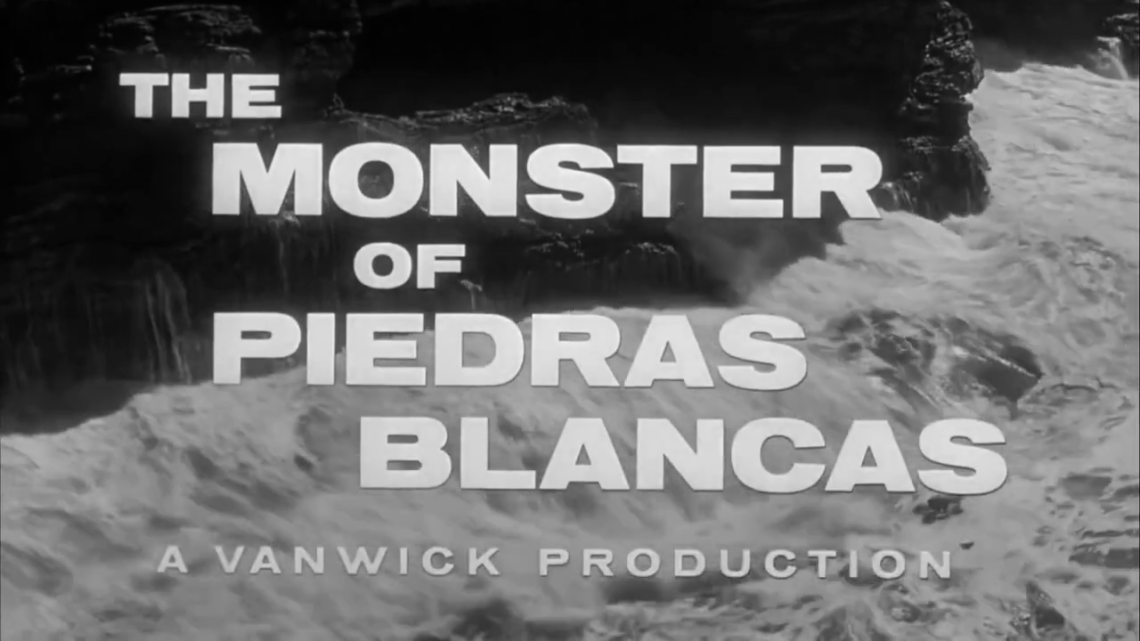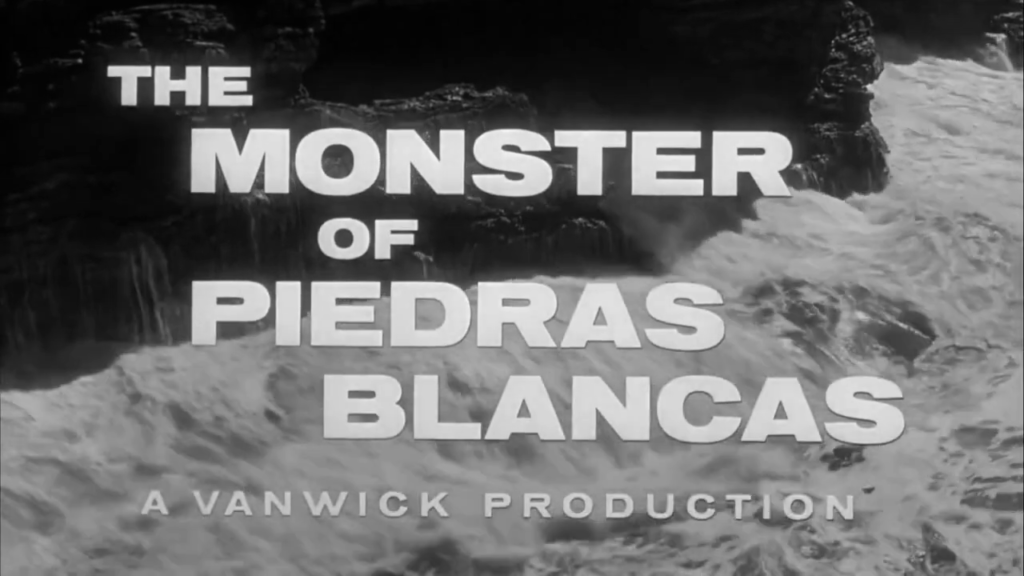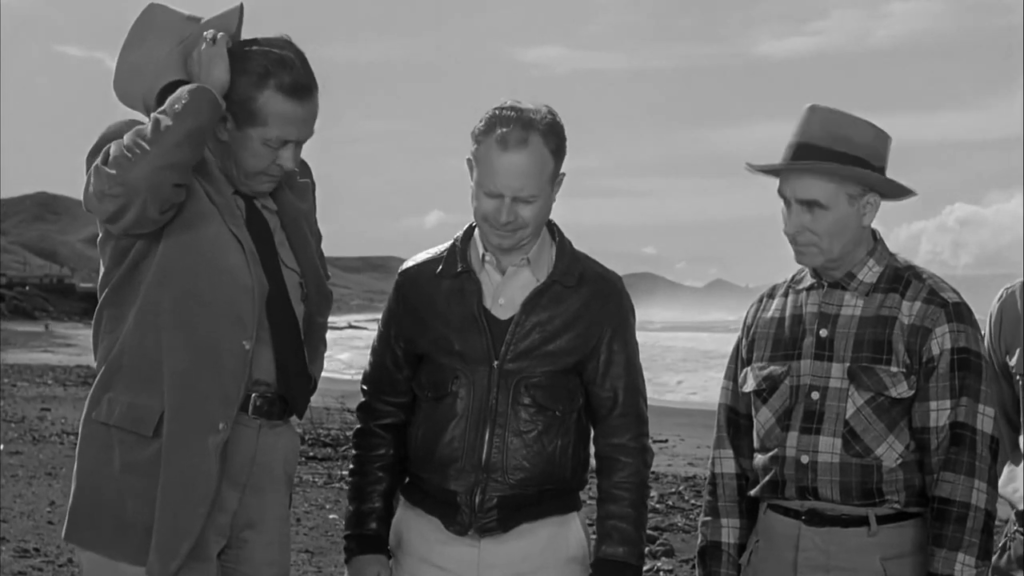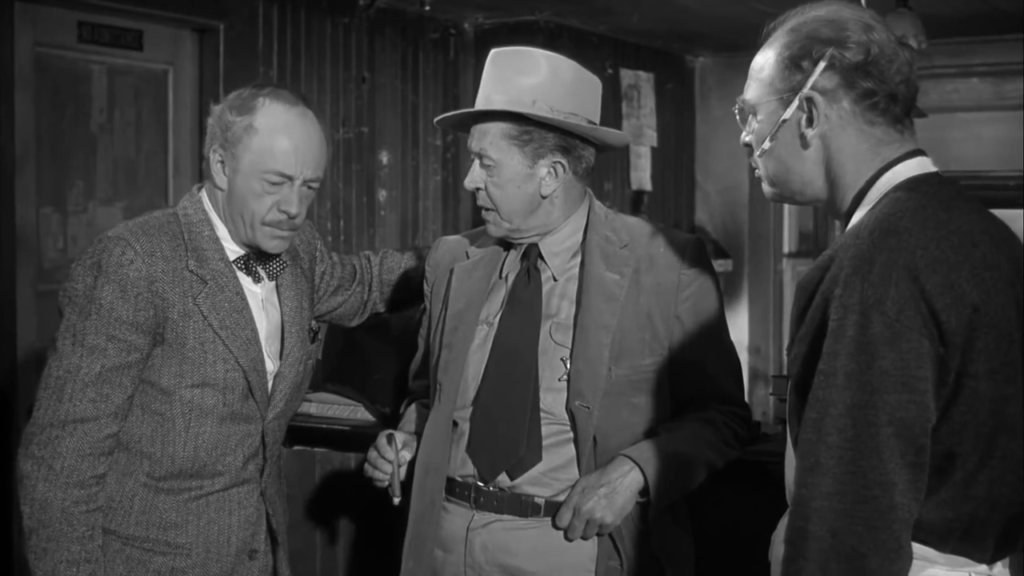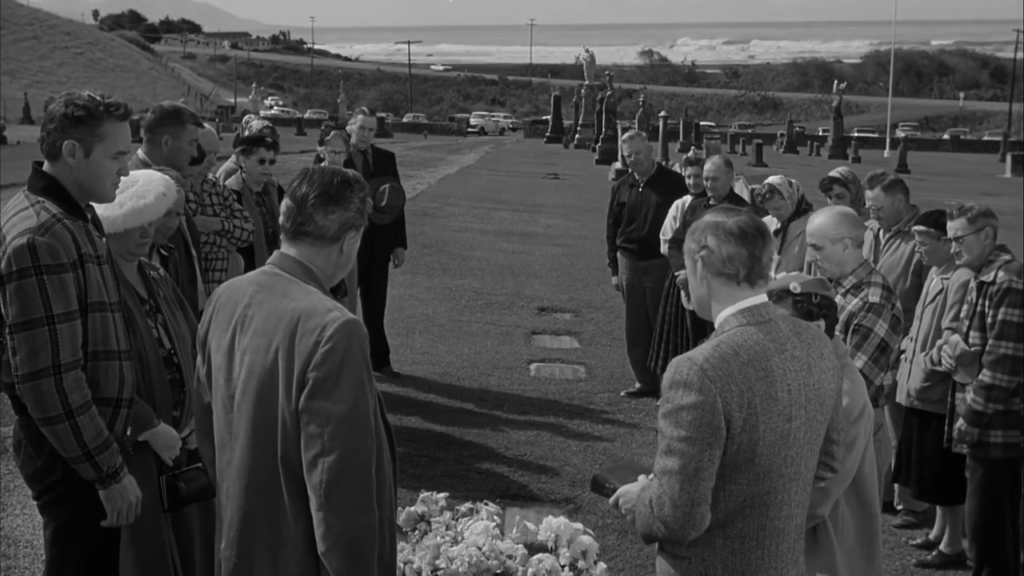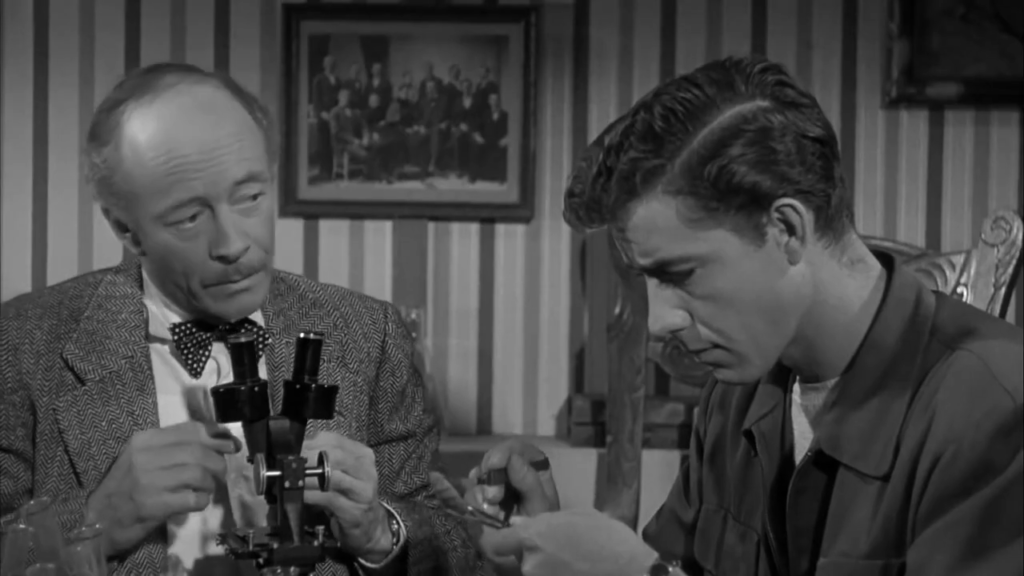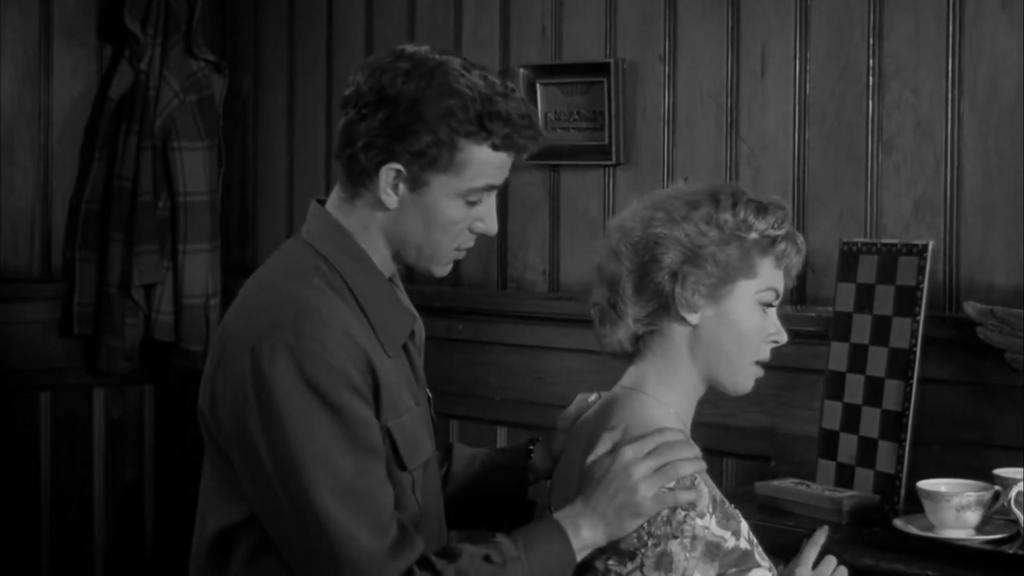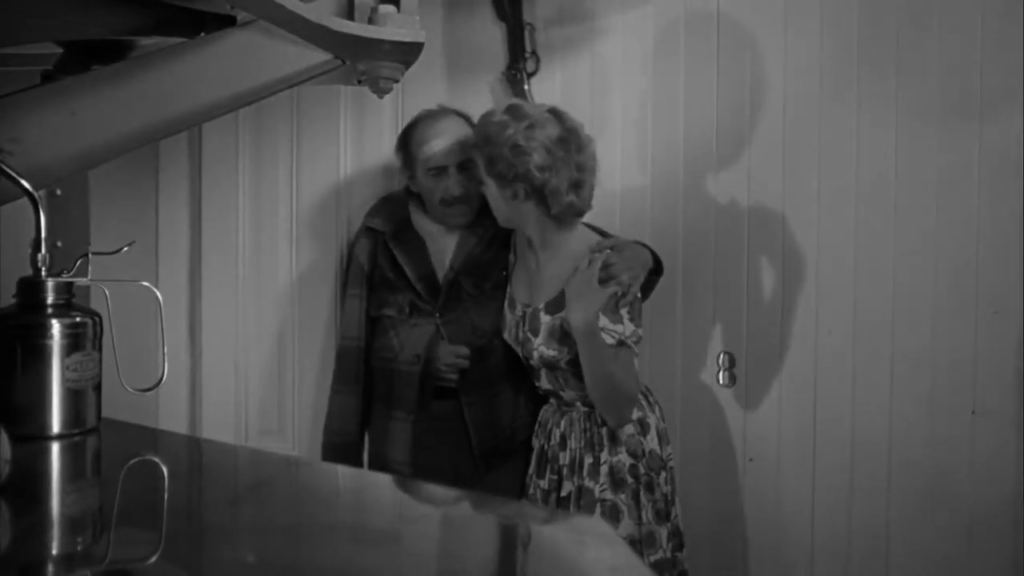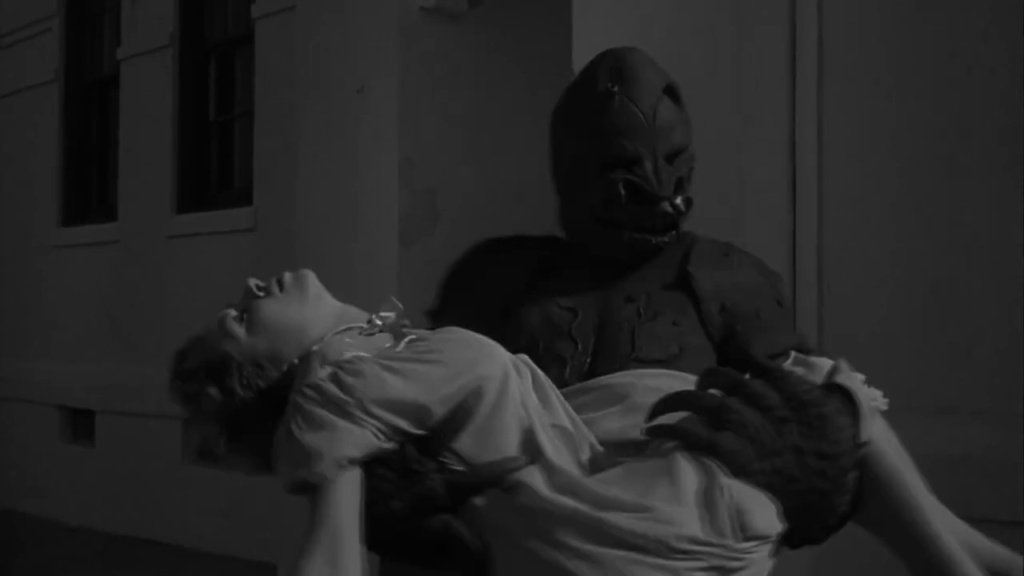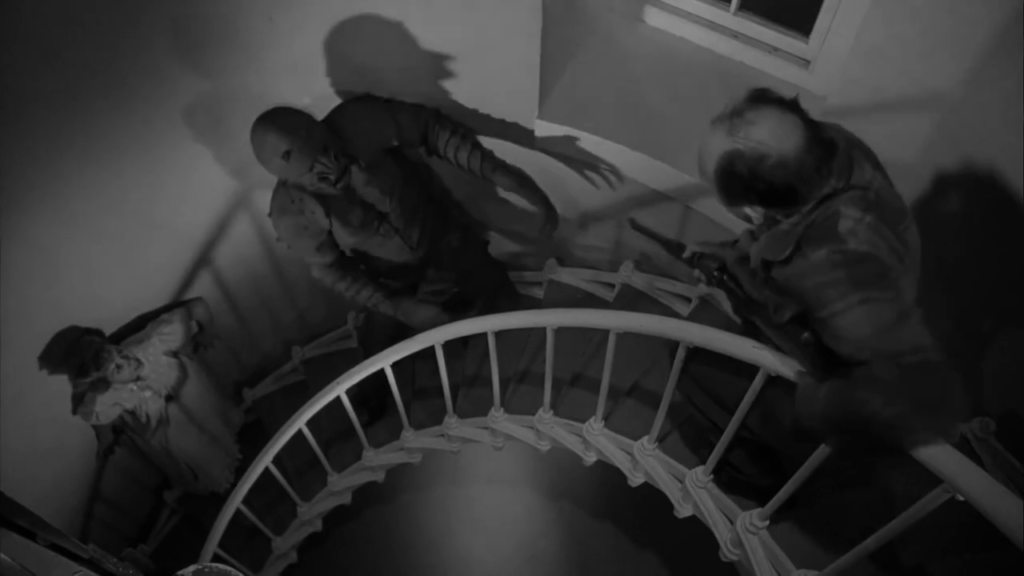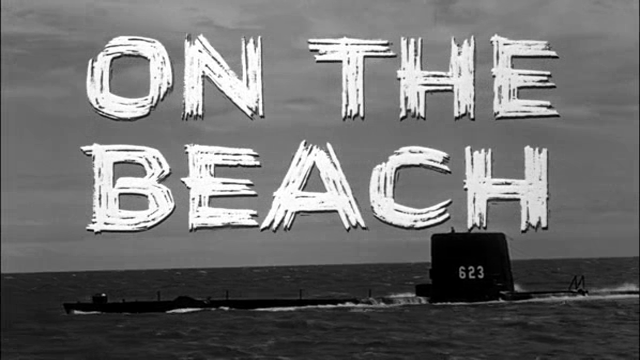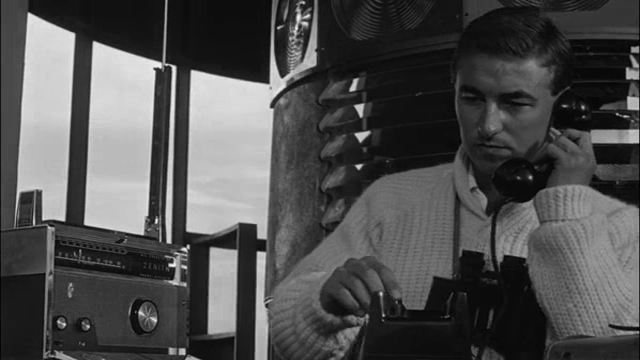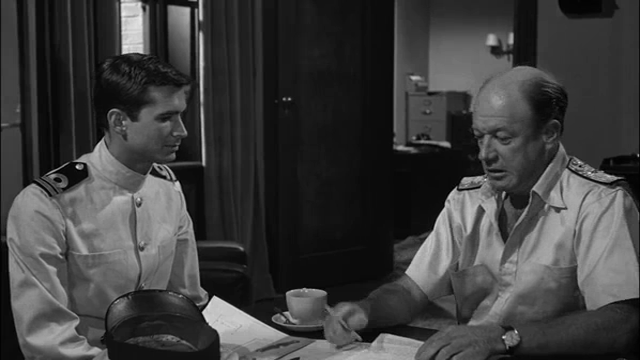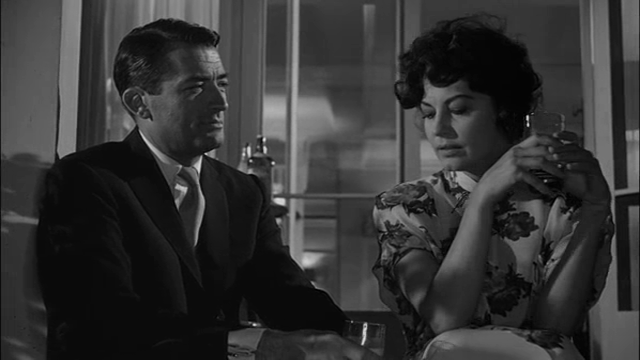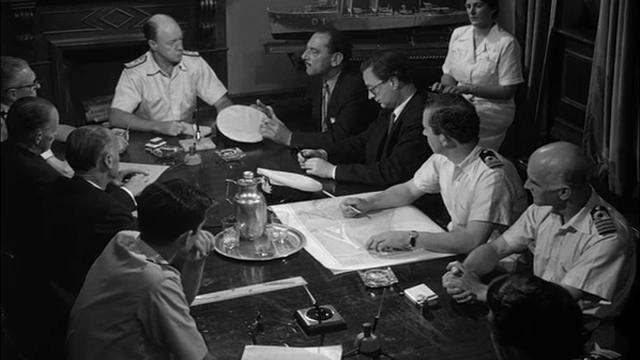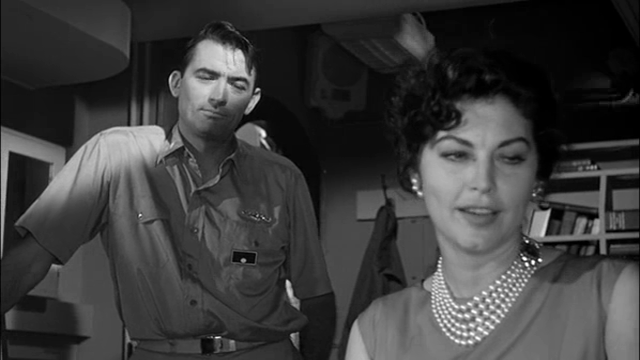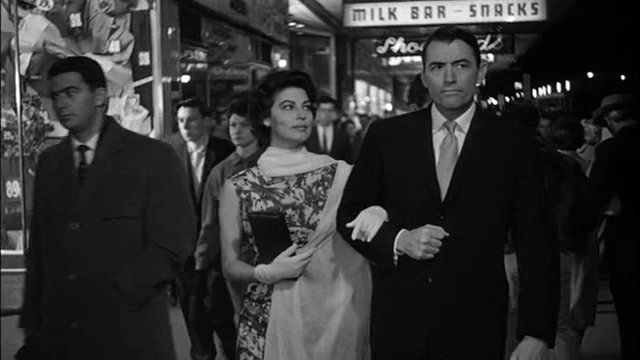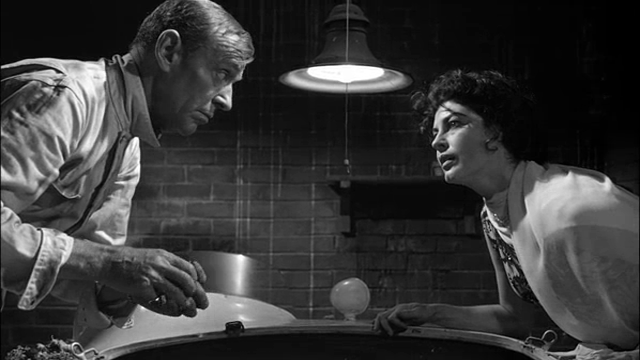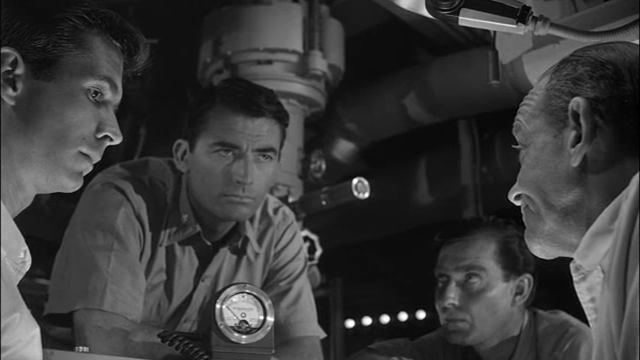-
#499 – Destination Space (1959)
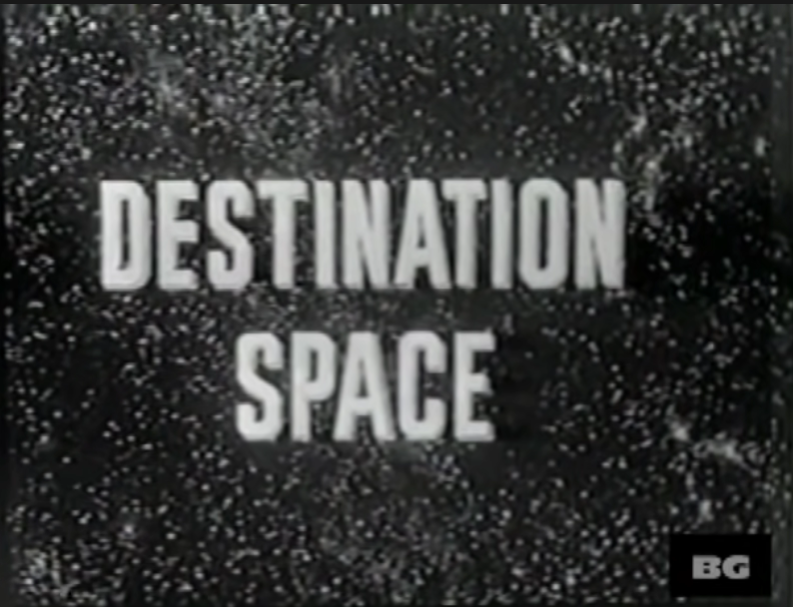
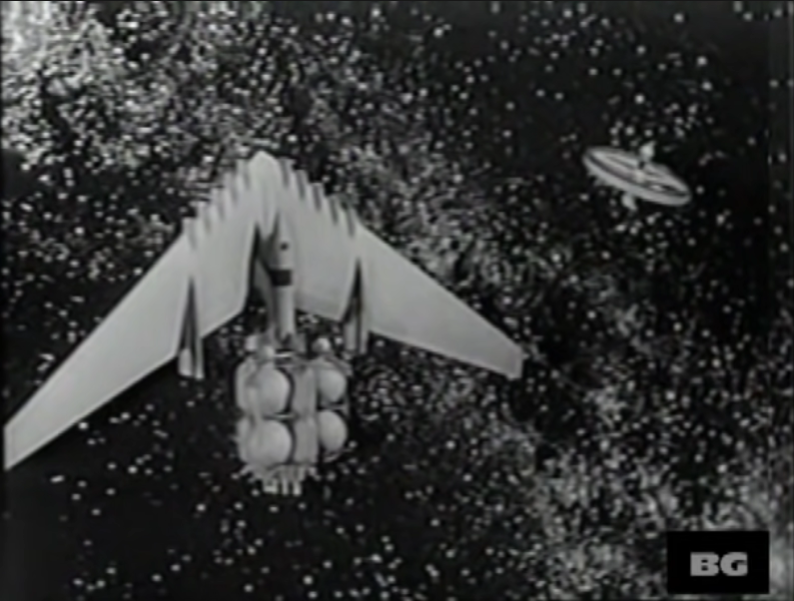
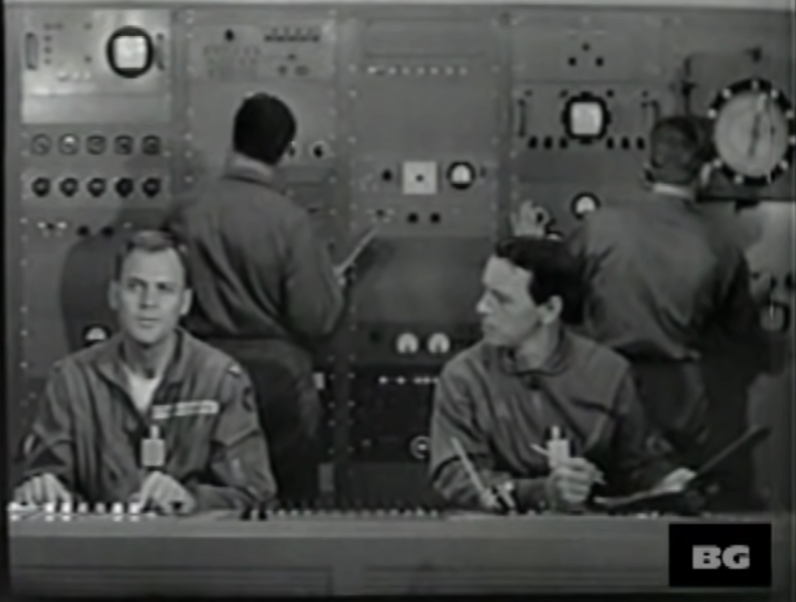
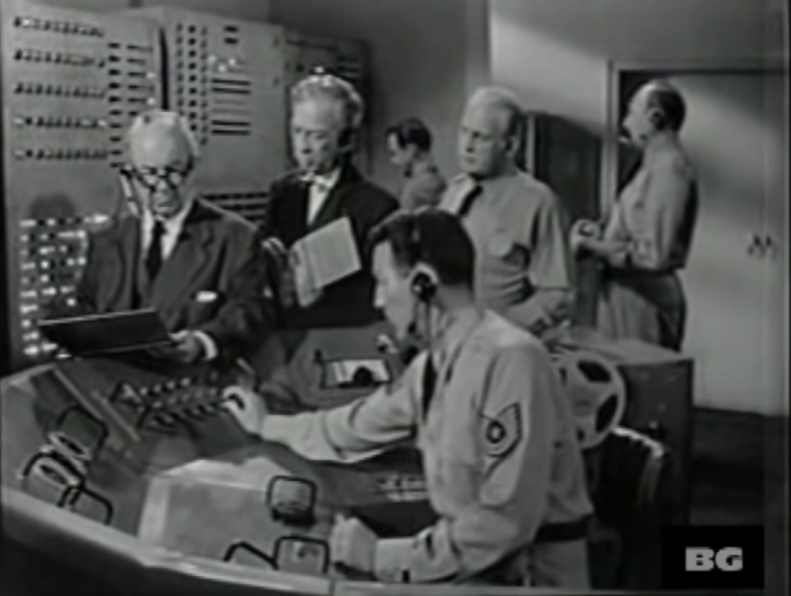
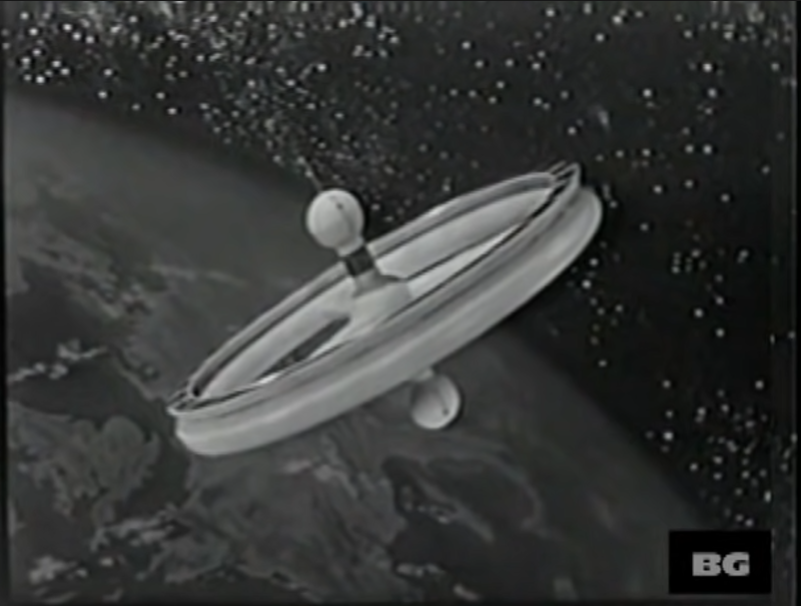
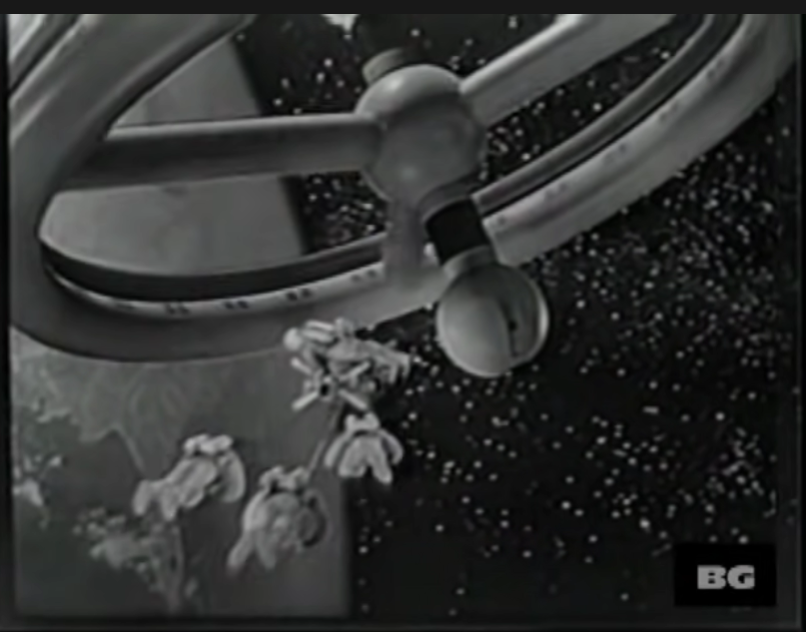
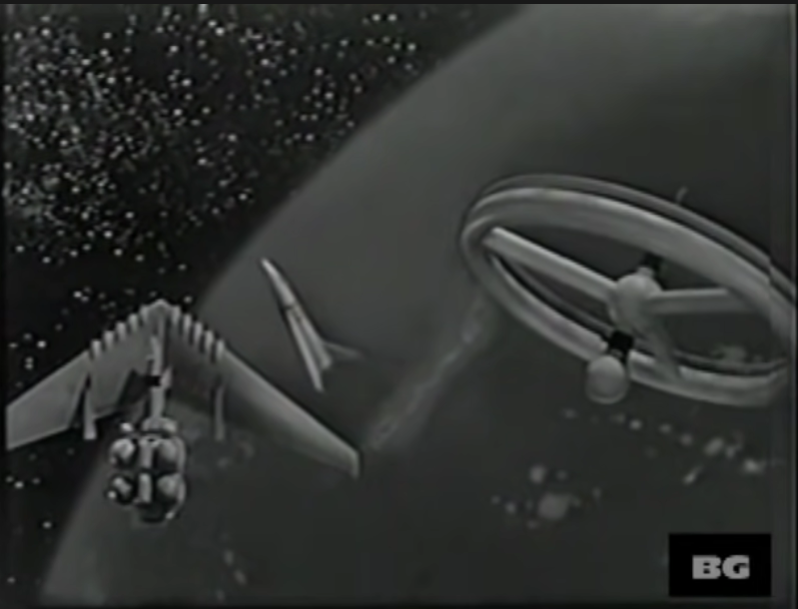
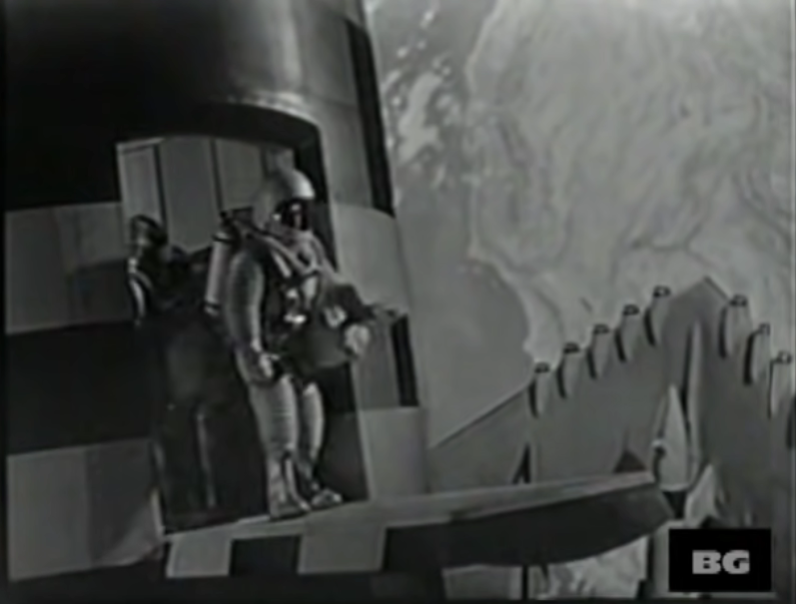
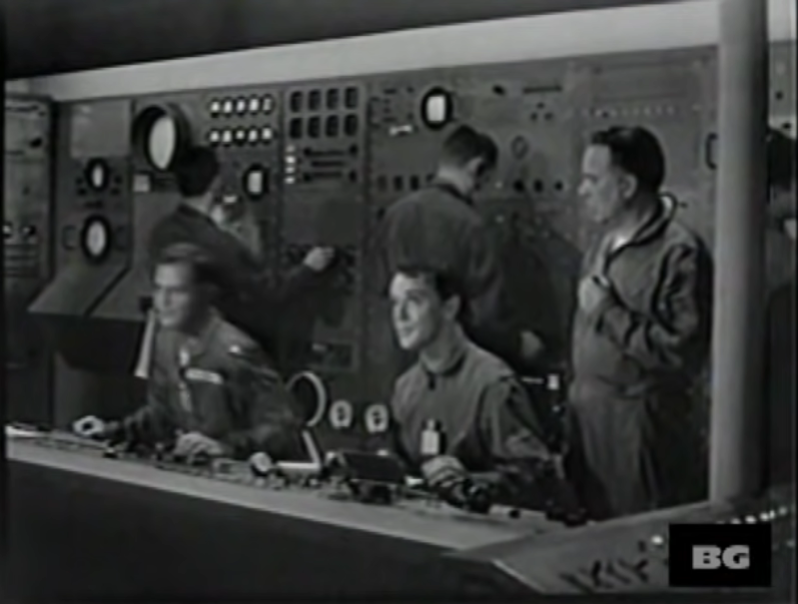
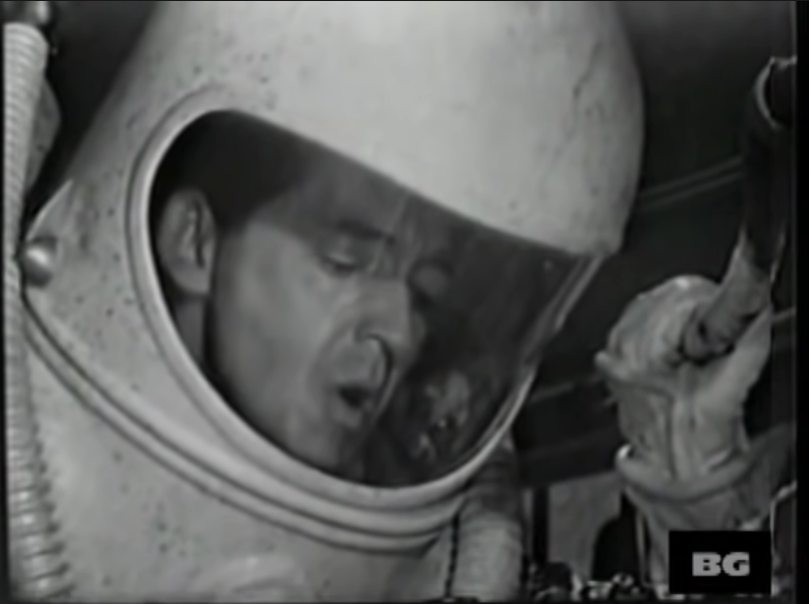
Destination Space (1959)
Film review #499
Director: Joseph Pevney
SYNOPSIS: On board an orbital space station, the launch of a new spaceship is aborted when a meteorite crashes into the station. Jim Benedict, director of the United States space programme and person in charge of the station, appears before a Senate committee hearing, attempting to justify the continued operation of the space station, despite resistance from, in particular, senator Royce…
THOUGHTS/ANALYSIS: Destination Space is a 1959 sci-fi television film that was intended as a pilot for a TV series, but the pilot was never picked up by the networks. The plot concerns the role of Jim Benedict, head of the U.S. space program, and an orbital space station designed to launch spaceships to the moon. After a meteorite strikes the space during a test launch, he faces renewed opposition to his plan, with to being described as a waste of money and too risky. Being a TV pilot, it is only fifty minutes long, and so has to fit a fair amount of content into it: the opening five minutes is decent enough, and provides enough backstory to what’s happening, with a bit of drama and suspense too. However, here is the one big problem with this film/pilot: I don’t know what the purpose of it is. They talk a lot about getting a spaceship to the moon and landing people there, establishing a colony etc. but the film doesn’t get anywhere near doing that, and instead focuses on committee hearings and inter-personal drama that isn’t particularly interesting. I suppose back in 1959 when this film was made the concept of landing people on the moon and space travel would have been more interesting because it had not been accomplished yet. The focus is not on the speculative or science-fiction aspects though, but instead rendering the logistics of space travel into a drama: the film spends more time in a senate committee hearing than it does in space. As a self-contained film it has no real climax or payoff, and no real progress is made on the objectives, which I suppose would have been part of the TV series if this pilot would have been picked up. However, I’m not sure where the TV series would have gone in that respect: would they have gone to the moon eventually? What then? More committee meetings? In making the premise so grounded and “realistic,” there seems very little scope for development and possibilities with the set up. As such, I can see why as a pilot it was not picked up for a full TV series.
The characters are a typical cast that aren’t particularly interesting or memorable. Jim Benedict is the typical male lead, like the type yo9u would see in the B-movies or serials in the 50’s: embodying the all-American ideals of ambition, adventure and such forth. The female characters solely exist as love interests for male characters, notably Jim’s girlfriend June and his buddy Dave’s girlfriend Kim. Kim also randomly confesses her undying love for Jim too, setting up a love triangle which really adds nothing to the story. I suppose there’s an effort to keep the characters grounded in line with the “realism” of the story and drama, but not making the drama between the characters compelling really leaves nothing for the viewer to hook onto.
There’s some ambition in setting the scene for the film/series; the models of the space station and shuttle orbiting earth are compelling enough for the time, though nothing special. The interior sets too are full of detail, which makes it stand out to me against the swathe of b-movies which looks like they were made on a shoestring budget. Overall though, it is easy to see why Destination Space did not get picked up for a TV series: while some of the visuals are interesting, there’s not any real indication of where the series would go other than more boring senate meetings. The decision to focus on drama and the realism behind the ideals of the space race doesn’t really offer anything because the characters are dull and uninteresting, without any unique traits to invest in. As a standalone film, it doesn’t offer the typical plot of a problem, a flowing narrative and climax, and is just really boring. Maybe it would have been of more interest at the time when the space race was more in the national conscious, but it’s got nothing to offer this long after the fact.
-
#489 – The Monster of Piedra Blancas (1959)
The Monster of Piedras Blancas (1959)
Film review #489
Director: Irvin Berwick
SYNOPSIS: The quiet Californian town of Piedras Blancas hides a dark secret: in the caves beneath the lighthouse, there hides an ancient monster that starts killing the residents of this sleepy town. Unaware of the monster’s existence, a number of the residents try to find out what is causing the killings…
THOUGHTS/ANALYSIS: The Monster of Piedras Blancas is a 1959 sci-fi horror film. Set in the small lighthouse town of Piedras Blancas in Southern California, the residents of the town find themselves being killed off one by one, with no idea who…or what is doing it. The film is paced like a typical monster movie of the time, with very little momentum at the beginning, and various murders until the monster’s reveal. The pacing is very slow in this one, and we only get the reveal of the monster about two-thirds of the way in, and everything before just involves these cast of characters that do little to distinguish themselves. The dialogue is pretty dull, and the character development doesn’t help make things exciting. I suppose this dullness reflects the setting of this sleepy seaside town, but it doesn’t really make for an interesting movie.
The film is an independent production, so it doesn’t have the backing of the big studios, but then again, those same studios were cranking out films like this at about the same quality, and the same runtime just over an hour long (this runtime was typically suitable for being shown at drive-in cinemas as part of double features, that were popular at the time). As such, it’s rather indistinguishable from a more ‘mainstream’ production. The on-location shots of the cliffs and the town do give it a more authentic feel instead of just relying on sets, so it does have that going for it. The cast of characters can easily be remembered by their roles, and their names are somewhat irrelevant: you have the doctor, sheriff, storekeeper, lighthouse keeper and the young couple. Each of them, as mentioned, fills out a fairly predictable role, and adds very little to proceedings. The young woman manages to show a lot of skin fairly regularly (even going swimming in the sea naked at one point), which would have been a little risqué at the time, and not something I’m sure a bigger production could have gotten away with.
The most notable aspect of this film is definitely the monster itself. Very similar in design to “The creature from the black lagoon,” (and designed by the same creator), the monster is based on a diplovertebron, which was a prehistoric creature that lived over three hundred million years ago. We don’t get too many shots of the creature in it’s full glory, but when we do it looks fairly decent for the time, with a scaly skin and water oozing out of its mouth. One of the other most memorable aspects of the film is the use of gore. In most Hollywood films, the killings would be done offscreen or without any blood or viscerality. When we get the full reveal of the monster, he is carrying the bloody decapitated head of his latest victim, which certainly comes as a shock, since nothing else has happened in the film up to that point, and also you just don’t expect to see that kind of gore in these films; also, the effect looks pretty convincing too. We get another shot later on of the abandoned head being walked over by a crab which is also has the same effect, but apart from that, there’s not too much to say about this film. The Monster of Piedras Blancas is a fairly forgettable film save for one or two moments that show off its horror credentials. It’s fairly short runtime means you can probably check it out without too much fuss though.
-
#344 – On the Beach (1959)
On the Beach (1959)
Film review #344
SYNOPSIS: After a nuclear war renders the northern hemisphere uninhabitable, the U.S. submarine USS Sawfish docks in Australia, where the last of the world’s population have been fleeing. Dwight Towers, the Captain of the submarine, is summoned by Australian naval command to take the submarine back to North America to test a theory that the radiation may have subsided. Peter Holmes, a young officer in the Australian navy, is to join Towers on board, and invites him back to his home to spend time with his family before they head out. The cast eventually have to come to terms with the end of the world in their own ways, as the radiation slowly makes its way southwards…
THOUGHTS/ANALYSIS: On the Beach is a 1959 film about the end of the world. I have previously reviewed the 2000 TV miniseries that is a remake of the film, so I will do some small comparisons between the two, but focus on this version. The film opens with Captain Dwight Towers of the U.S. submarine USS Sawfish docking at an Australian port, in light of the Northern hemisphere being uninhabitable due to the radiation from a nuclear war. The Australian navy command has a new mission for Towers: to return to the northern hemisphere to investigate an incomprehensible more code signal which seems to be being sent from San Francisco, which should be uninhabitable. Navy officer Peter Holmes ia assigned to Towers’ submarine, and he invites Towers to his home to spend time with his family before they head out. The film focuses heavily on the relationship between the characters, and makes the film more of a drama than a post-apocalypse film.
The world that the film envisions five years in the future (set in 1964 from the 1959 production date) is a society that seemingly has carried on like very little has changed, and order still seems to be maintained, unlike the 2000 film, where society has all but collapsed. There’s some effects of the war, such as people using horses in place of cars since there’s no oil, but other than that everyone still seems to be going about their daily businesses, eiether through ignoring the inevitable, or having no idea what to do about it. This is also expressed through the main characters, as each one has a different attitude to the state of the world, such as Peter’s realism, and his wife Mary’s reluctance to talk about or hear anything about how they are all going to die. Dwight’s sheer reluctance to accept that his family was killed in the war and that they will simply be at home when he returns is very well delivered, and the complications it brings up with Moira’s (Mary’s older sister) attempts to get closer to him means that her usual tricks to seduce men, which she has no moral quabble about, make her hesitate with regards to a man who does not actually have a family, but believes he does. Another strong moment is when Peter talks with his wife about the suicide pills that the government will be offering, as he sees it as the only way to avoid a painful death for her and their daughter, and Mary finally has to confront the uncomfortable truth.
Towers and Holmes set sail to San Francisco to investigate the mysterious signal, and thereby shifting the focus of the film from the human drama to the mystery of the signal and the exploration of hope. This puts a number of the film’s threads on hold, and changes the pace a little. The film gets a bit muddled in the middle, and moving the film away from those relationships it has been building up means the viewer has to shift their focus as well. It has it’s moments, but it doesn’t offer as much drama as the opening. This is a long film as well, going for over two hours, and the scenes are very dialogue-intensive and often lacking musical accompaniment. I felt that the film needed to produce more dramatic high and low points in order to take the viewer on an emotional journey, and while the ones it does are well executed, they are inconsistently placed, and some portions of the film are forgotten in a lull of activity. The performances all-round are fairly good, but some of the Australian accents the American actors use are pretty bad. By the time the film ends you see each of the characters having to make tough choices about how they approach the end, and the way the character’s have been built up gives their actions a powerful significance. There’s very little said about the nuclear war; it just seems like it’s a thing that happened and everyone has just accepted and moved on, while I think exploring this in more depth would have helped fill in the more quiet and less emotional scenes of the film. On the Beach pushes some boundaries in terms of exploring the inner traumas of people in the face of certain death, and offers a variety of characters in a well-defined world. It does however, fall short in terms of pacing and enough content to justify its runtime, and the human drama is done in much more well-rounded films, meaning overall it’s a mixed bag.
